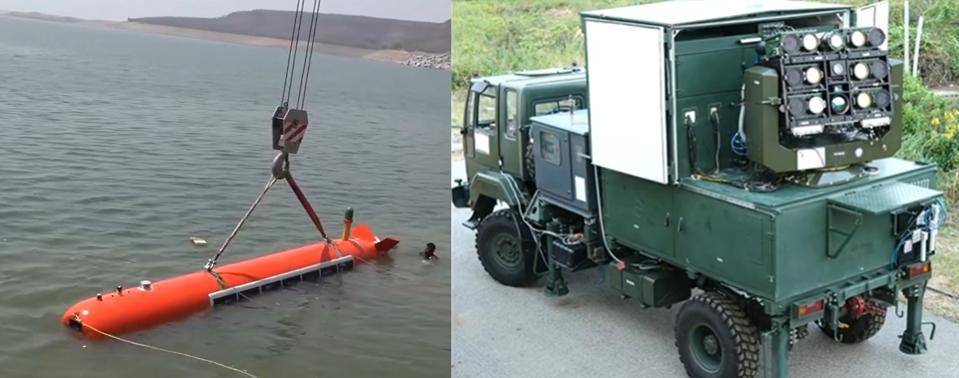Over the past three years, the Russia-Ukraine War has transformed modern warfare, as new technologies are being rapidly developed and fielded to provide enhanced capabilities to the warfighters. Both countries are heavily leveraging commercial technology, especially in the drone and counter-drone space, to defeat traditional military systems, such as tanks and artillery. This shift has allowed different countries, including India, to become larger players in the defense technology domain. In particular, India’s Defence Research and Development Organization (DRDO) has conducted a number of tests in the last few months on cutting-edge drone and counter-drone systems.
Founded in 1958, the DRDO’s mission is to reduce India’s dependence on foreign defense systems by creating indigenous technologies. The organization currently employs more than 5,000 scientists in a broad network of laboratories and research centers. Despite Indian Prime Minister Narendra Modi’s emphasis on military modernization and domestic production, the DRDO still operates on a fairly limited budget compared to the defense budgets of other countries. As such, they appear to be prioritizing their research efforts, especially in the drone and counter-drone space, to align with technologies that are finding success on the Russia-Ukraine battlefield.
Recent DRDO Drone Development Efforts
The DRDO has a long history of drone development efforts, having built a diverse fleet of autonomous vehicles that leverage domestic, commercial technology. The drones range from the Trinetra, a small quadcopter with advanced sensing and autonomy, to the Rustom, a larger fixed-wing aircraft capable of carrying various payloads. The DRDO is transitioning these drones into products for the Indian military, while further developing them to have new capabilities. In the past year, the Indian army placed an order for 700 Trinetra drones. Meanwhile, the DRDO is continuing the development of the Archer-NG, the newest variant of the Rustom, which has reported range of 1,000 km with a payload capacity of 300 kg.
More recently, the DRDO has been testing glide bombs, a variant of drone technology that has been used extensively by Russia in their missile strike campaigns. In early April, the DRDO successfully tested two glide bombs. The first, the Gaurav, which was developed with industry partners, is reported to have a range of 100 km and a weight of 1,000 kg. The second glide bomb, the Smart Anti-Airfield Weapon, has a similar range, but is smaller, only weighing 125 kg. However, it uses advanced optics for increased accuracy with a focus on striking airfields. According to both reports, the glide bombs successfully hit their targets.
While air-based drones have shaped much of the current conflict, Ukraine has also demonstrated the strategic value of water-based drones, which have limited Russian operations in the Black Sea. The DRDO has followed suit, with its Naval Science and Technology Laboratory testing the High Endurance Autonomous Underwater Vehicle (HEAUV) in a lake in late March. The HEAUV is 10 meters long, weighs six tons, and carries a payload of advanced sensors. It is designed for 15 days of endurance at a cruising speed of 3 knots. The tests showed that the HEAUV could successfully navigate both underwater and on the surface. Once further testing is complete, the HEAUV will likely be used by the Indian Navy to monitor their maritime borders.
Recent DRDO Counter-Drone Development Efforts
With the rise of drone technology, there has been a corresponding push in counter-drone technology. Both Russia and Ukraine have deployed a mix of kinetic and non-kinetic solutions to neutralize aerial threats. Similarly, the DRDO maintains a broad portfolio of counter-drone efforts, encompassing both types of systems. These technologies are at varying stages of technical maturity, with two recently reaching the testing phase.
In February, the Research Centre Imarat, a DRDO laboratory, tested the Very Short-Range Air Defense (VSHORAD), a comparable system to the Igla-S, which the Russian military uses extensively to counter low-flying aerial threats. The VSHORAD is a man-portable system intended to engage drones, helicopters, and low-flying aircraft at a range up to 6 km using an infrared-homing missile. In the test, the VSHORAD successfully intercepted multiple small, low-signature drones.
While conventional systems remain effective, both Russia and Ukraine are advancing new counter-drone technologies as well. One of Ukraine’s most recent innovations is the Tryzub, a laser weapon designed to shoot down aerial threats. India has taken a similar approach. In mid-April, the DRDO tested the Mk-II(A) Laser Directed Energy Weapon system, which uses radar and electro-optical sensors to track low-flying targets, including quadcopters and helicopters. Once a target is identified, a 30-kilowatt laser delivers structural damage to disable the aircraft. The system was developed by the DRDO’s Centre for High Energy Systems and Sciences, with support from Indian industry and academic institutions. It was successfully tested earlier this month, shooting down a small Chinese-manufactured drone.
Future Trends for India and the DRDO
The Russia-Ukraine War is highlighting the fast-paced future of defense technology, particularly in the drone and counter-drone sectors. While the United States, Russia, and China have long dominated many military systems, this field has seen a broader range of countries rapidly developing new capabilities. India is emerging as a key player. Recent testing by the DRDO shows India’s ability to quickly develop critical drone and counter-drone technologies that have found success on the modern battlefield. As these systems mature, they will equip Indian forces and potentially support foreign military sales, boosting India’s presence in the global arms market. More broadly, these efforts will strengthen India’s defense industrial base, allowing India to position itself to be a more self-reliant and agile force in the evolving global defense landscape.

